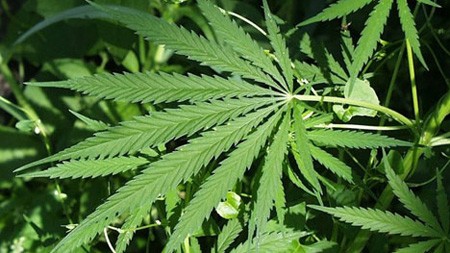Cannabis Use Mimics GABA Dysfunction Seen in Schizophrenia: An Animal Study

March 21, 2014
Cannabis Use Mimics GABA Dysfunction Seen in Schizophrenia: An Animal Study
Barbara Geller, MD reviewing Cass DK et al. Mol Psychiatry 2014 Mar 4.

Exposure to a cannabinoid receptor agonist during early and middle adolescence is associated with aberrant GABA transmission in adult animals, similar to findings in schizophrenia.Genetic, anatomic, and behavioral research support a key role of impaired γ-aminobutyric acid (GABA) transmission in schizophrenia (e.g., Neuropsychopharmacology 2001; 25:1; and Schizophr Bull 2013 Dec 22) and of reduced glutamic acid decarboxylase 67 and GABA levels in the prefrontal cortex (PFC) of adult mice exposed to marijuana during adolescence (Neurobiol Dis 2014; 63:35). To expand these findings, researchers conducted electrophysiological experiments in mice that were injected peritoneally with an agonist of the cannabinoid 1 receptor (CB1). Exposure occurred daily for 5 days at one of four points — early adolescence, mid-adolescence, late adolescence, and adulthood.When mice were adults, cannabinoid exposure during early and middle adolescence was associated with lower local field potentials to stimulation trains of 20 or 40 Hz applied to the ventral hippocampus. Treatment with a GABAergic compound reversed the decrease. Results from in vivo experiments showed that GABA inhibitory postsynaptic currents from the PFC onto layer V pyramidal neurons were reduced after CB1-agonist exposure.
COMMENTThese animal findings are consistent with the increased risk for schizophrenia after long-term cannabis use (NEJM JW Psychiatry Jan 19 1988) and with abnormal prepulse inhibition and executive cognitive dysfunction, seen both in schizophrenia and after prolonged marijuana intake (NEJM JW Psychiatry Dec 21 2012 and Sep 17 2012). The availability of cannabis products anticipated with marijuana legalization warrants public health campaigns about the potential for serious mental health effects with marijuana use. Clinicians need to monitor teenage use and educate their young patients, as well as their parents, about the risks posed by marijuana. Editor Disclosures at Time of Publication
CITATION(S):Cass DK et al. CB1 cannabinoid receptor stimulation during adolescence impairs the maturation of GABA function in the adult rat prefrontal cortex. Mol Psychiatry 2014 Mar 4; [e-pub ahead of print]. (http://dx.doi.org/10.1038/mp.2014.14)
– See more at: http://www.jwatch.org/na33975/2014/03/21/cannabis-use-mimics-gaba-dysfunction-seen-schizophrenia#sthash.ZmNn3llS.dpuf

